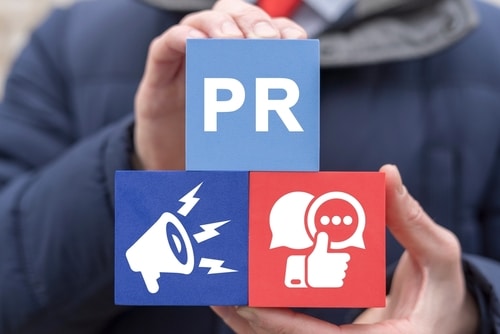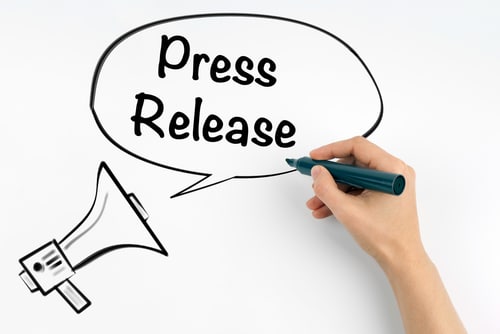What's a digital PR campaign and how can it help your business?
If you're a business owner, you'll no doubt have messages you need to get in front of a particular audience and land them just right.
You might have a launch that you need to hype, a product that needs a boost in awareness or a new positioning you wish to showcase. You may want your content to be seen by millions.
Digital PR, an evolution of traditional public relations specifically targeted for the digital age, will help you achieve these objectives. It encompasses using online channels, influencers, and content creation to shape, amplify and maintain a positive brand presence in the digital space.
A digital PR agency will usually create and run a campaign that leverages diverse information sources, including social media, blogs, news websites, and many others from the myriad of online channels, ideally aligned to a core marketing strategy.
How is it different from traditional PR?
The objective of traditional and digital PR is the same – both aim to raise awareness and sentiment with a target audience.
There are two fundamental differences, though. The first difference is where the activity happens. Traditional PR is focused on getting favourable coverage in print publications and broadcast channels (like TV and radio). Digital PR is broadly concerned with gaining favourable coverage in the online space, targeting websites, social media, bloggers, influencers, podcasters and creators.
The second difference is one of measurement. Traditional PR has always been notoriously difficult to measure. You can only predict and estimate how many people might see an article in a magazine or newspaper, whereas, in the online space, you can get a much more accurate and detailed picture thanks to the quality of data captured.
This means that a digital PR campaign should considered as a fundamental part of a holistic online marketing strategy.
Why it’s important for your business
With the shift towards digital platforms, businesses can only compete by leveraging the power of digital channels and technology to meet their audiences where they now gather.
Digital PR allows for real-time communication and engagement, helping brands and businesses establish a solid online presence, manage their reputation and connect with audiences in a way that aligns with the fast-paced nature of the 21st-century media landscape.
What are the different parts of a digital PR campaign?
Like all marketing activities, a digital PR campaign is often multi-faceted, and its constituent components can vary depending on your objectives and target audience. A digital PR service would be expected to set objectives and target metrics with their client before embarking on any activity.
Generally speaking, digital PR campaigns fall into three areas:
Reactive
Where a campaign is required to react to the media and be relevant to the news agenda. This could mean spotting a breaking news story or a national talking point and, acting quickly, publishing a story to drive awareness off the back of it with techniques like newsjacking.
Proactive
Where you need to plan activity around key dates like Christmas or Valentine’s Day or key events like sporting events or major awards ceremonies. Creativity and relevance are key here, as these dates tend to be saturated with others trying to compete in the same space. A successful technique can be to look for more ownable dates and events in the calendar that are relevant to your brand message.
Planned
Where you map out a hero campaign across a range of channels. Planned campaigns take time but create a lot more noise and get better, more sustained results.
With that in mind, here are some of the main elements of a planned digital PR campaign:
Media outreach and relations
A good digital PR agency will have built relationships with relevant online journalists, editors, bloggers and influencers and know where to reach any other relevant connections. Digital PR involves engaging the right and relevant contacts with personalised pitches, press releases and exclusive content to secure online coverage and create headlines.
SEO and Link Building
A huge part of digital PR is about using tactics to earn backlinks to support your SEO strategy. Backlinks are important because they’re how search engines determine the authoritativeness and relevancy of your website when it comes to search queries. The more your content is linked to, the more authoritative it’ll be measured, and the more search engines like Google will reward you, so getting those backlinks is necessary for good SEO results.
A digital PR agency will often create linkable assets, such as articles, thought leadership pieces, blogs and videos, and promote them to those relevant contacts mentioned above to encourage them to write about and link to your content. It can be very powerful to be backlinked from a well-known and popular site, like a newspaper or an industry resource.
But it’s also just as beneficial to get links and mentions from smaller third-party sites as consumers look for unbiased, non-branded information about your brand or product.
Content creation and publishing
To complement the outreach and link-building, we need something compelling to share and to link to. A digital PR agency will develop compelling, shareable, SEO-optimised content that aligns with the campaign objectives. These may be in the form of press releases, blog posts, articles, videos, infographics, and more, all optimised for online use and published on the most relevant platforms and places.
Whatever the content, its got to be relevant and worth talking about to gain visibility, and, again, that’s where your digital PR agency’s specialism comes into play.
Social media and influencer collaboration
As a digital technology that allows you to connect with your audience on a more personal level, with the power to immediately affect reputation and trust, social media is a crucial element of a digital PR campaign. Activities such as social media optimisation, community management, crisis management, and managing relations with your customer base can all be expertly handled by your digital PR agency.
Social channels also allow businesses to benefit from the amplification provided by influencers and thought leaders. Building relationships and collaborating with these key figures can enhance your credibility and extend your reach. Still, it can be a time-heavy exercise, so it is best managed by specialists.
Monitoring, measurement and analysis
Everything we’ve discussed up to this point is far more powerful when effectiveness is measured correctly. It’s vital that you use monitoring tools and analytics to track the success of the campaign and measure KPIs so that you can adapt the strategies as needed and analyse the ultimate success of a campaign at the closing stages.
Particular metrics tracked include media coverage (the number of media mentions, features and articles reached); social media engagement (analysis of likes, shares, comments and overall engagement); website traffic and conversions; backlink analysis; social listening (identify and analysing online mentions, both positive and negative; and influencer impact (measuring the reach and impact of influencer collaborations through audience engagement and follower growth).
Analysis of this data will tell you which campaign elements were successful and which can be improved on – or dialled down – next time.
Of course, there’s a lot more to it than this
Although this overview provides valuable insights into some essential components of a digital PR campaign, it’s important to recognise that we’re just scratching the surface here – the realm of digital PR extends beyond these elements. In a comprehensive strategy, a planned campaign would balance opportunities for the proactive and reactive elements we mentioned earlier so you can seize all potential opportunities. Social media and influencer collaboration, only really touched on above, will play a pivotal role in shaping a brand’s online narrative these days.
In essence, digital PR is an indispensable tool to establish a strong online presence and connect with audiences in the dynamic 21st-century media landscape. The world’s move to online, real-time media and connection necessitates its inclusion in the marketing mix.
Read all about it...
LATEST NEWS

How Startups Can Earn Big Media Coverage with Small Budgets

The Role of PR in the Health Tech RevolutionTransform Your Press Release


